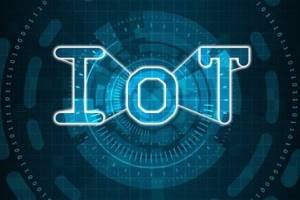What does 5G mean for IoT?

5G is the foundation for realising the full potential of the Internet of Things (IoT). While 5G’s commercial availability will expand in 2020, the industry is already working to develop new global standards and pre-5G products to benefit industries everywhere.
Ericsson’s latest Mobility Report points out that there will be 550 million 5G subscriptions in 2022 and the Asia-Pacific will be the second-fastest-growing region with 10% of all subscriptions being 5G in 2022.
The main advantages of the 5th Generation mobile communications are greater speed in the transmissions, lower latency and therefore greater capacity for remote execution, a greater number of connected devices and the possibility of implementing virtual networks (network slicing), providing more adjusted connectivity to concrete needs.
As we know, the purpose of IoT technology is to measure, collect, and analyse data to provide better customer experience and improve product quality. In other words, its function is to make our cities, homes, and businesses work better. As it continues to evolve, programming the IoT becomes more and more complex.
It’s impossible to avoid the buzz around 5G networks as governments, telecommunications providers and vendors vie over who will lead the next generation of mobile internet connectivity. 5G promises to offer significantly faster speeds and a more reliable connection to mobile devices than any network before it. That said, 5G is about more than fast internet. Exponential growth in the capacity to carry more data faster will push unparalleled growth in the Internet of Things (IoT) technology projects.
More than just speedi
The first generation mobile network (1G) was all about voice. 2G was about voice and texting; 3G was about voice, texting, and data; 4G was everything in 3G but faster, and 5G will be even faster.
But 5G is more than these things, its unique combination of high-speed connectivity, very low latency, and ubiquitous coverage will support smart vehicles and transport infrastructures such as connected cars, trucks, and buses, where a split second delay could mean the difference between a smooth flow of traffic and a 4-way crash at an intersection.
IoT use cases are extremely diverse, ranging from the simple, such as fleet tracking systems, to the complex, such as automated public transportation systems. Some use cases require only simple data collection from a few basic devices in a relatively closed system, while others use advanced analytics, vast numbers of devices, huge amounts of data, autonomous machines, and integration with an organisation’s full IT and operations systems. 5G is designed to give operators the flexibility to support this wide range of potential use cases.
According to the Institute of Electrical and Electronics Engineers (IEEE), some of the new promising technologies for 5G will help to deliver data with less than 1ms of delay (compared to 70ms on today’s 4G networks) and can bring peak download speeds to 20 Gbit/s.
Problems to solve
In order to actually provide services up to par with such high expectations, many problems have to be solved like sharing the bandwidth, less interference, zero disconnections, etc. For that reason several new technologies are being developed: millimeter waves broadcast at frequencies between 30 and 300 GHz; smalls cells miniature base stations that require minimal power; massive multiple-input multiple-output (MIMO); beamforming, which helps massive MIMO arrays make more efficient use of the spectrum around them and full-duplex to transmit and receive data at the same time, on the same frequency.
In a recent post on www.IoTGlobalNetwork.com, 5G, featuring high bandwidth and low latency, makes diagnosis and treatment more efficient and convenient. The 5G remote diagnosis involves West China Hospital and the Chengdu Public Health Clinic Centre of Sichuan University. According to the on-site situation, ZTE has employed its CPE (Customer premises equipment) equipment to commissioning 5G services by means of outdoor 5G signals while constructing indoor coverage points. On January 25th, 5G indoor base stations were built and interconnected, and the conference room for remote diagnosis and treatment in West China Hospital was first connected to the remote diagnosis and treatment system. This is an achievement that shows what 5G can do.
All these technologies depend on each other, meaning that solving problems for one give a better future for the other. We just have to see what is possible with current developments and how far we can push it.
On the way to 5G and IoT
Given the complexity of many future IoT use cases, the slow rollout of 5G features is unlikely to  trouble most companies. Instead, the beginning of the 5G era marks a useful starting gun for the race to begin. We now have clear visibility on what 5G means and a ticking clock for the features to come online.
trouble most companies. Instead, the beginning of the 5G era marks a useful starting gun for the race to begin. We now have clear visibility on what 5G means and a ticking clock for the features to come online.
With 5G the number of devices that can be connected to the network increases greatly, it will go to millionaire scale per square kilometre. All connected devices will have access to instant connections to the internet, which in real-time will exchange information with each other. This will favour the IoT.
It is anticipated that a common home will have a hundred connected devices sending and receiving information in real-time. If we think of industrial plants we would speak of thousands of connected devices.
This greater number of connected devices will allow smart cities and autonomous cars. For example, by placing sensors in different points and objects in the city, a large part of it can be monitored. If you share the car sensors’ information and that of the city, and these exchange data you can improve the cities’ quality of life, facilitate autonomous car navigation (choose better routes, reduce the number of accidents, and find available parking spaces).
Conclusion
With 5G and IoT, the technology is moving toward smarter and more efficient use of technology in homes, factories, buildings, cities, utilities and more. Connecting multiple devices for applications and services to offer a futuristic experience for users in real-world solutions. Almost every industry with see the change in automation, digital transformation and enjoy the improvised quality of life.

Kenny Trinh of Netbooknews
Though the infrastructure is still in its early phase in some countries, still the future looks promising with 5G and IoT. Cuelogic is among the most accomplished and versatile IoT development companies helping businesses achieve this digital transformation with 5G capabilities.
The author is Kenny Trinh of NetBookNews, where you can learn more about 5G.
Comment on this article below or via Twitter @IoTGN
